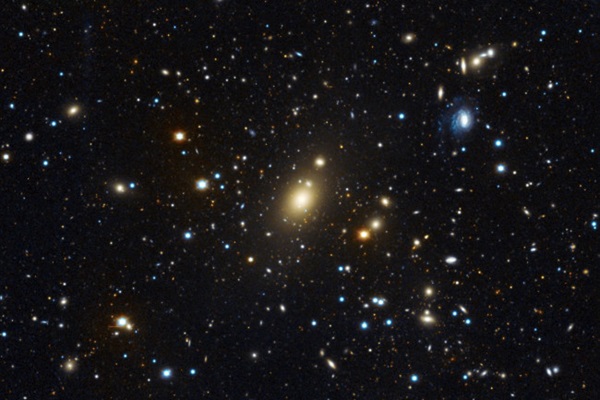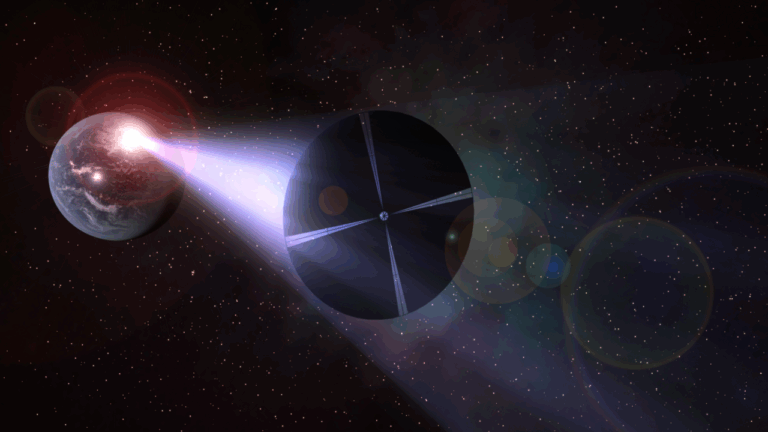Key Takeaways:
Holm 15A is a huge elliptical galaxy at the center of a cluster of galaxies called Abell 85. A team of astronomers captured a snapshot of Holm 15A’s stars in orbit around the galaxy’s central black hole and created a model to help them calculate the black hole’s mass. The team described their findings in a recent paper posted to the preprint site arXiv and set to be published in The Astrophysical Journal.
Making monster galaxies
When two spiral galaxies — like our Milky Way and the nearby Andromeda Galaxy — collide, they can merge and form an elliptical galaxy. In crowded environments like galaxy clusters, these elliptical galaxies can collide and merge again to form an even larger elliptical galaxy. Their central black holes combine as well and make larger black holes, which can kick huge swaths of nearby stars out to the edges of the newly formed galaxy.
The resulting extra-large elliptical galaxy usually doesn’t have much gas from which to form new stars, so its center looks pretty bare after its black hole kicks out nearby stars. Astronomers call these huge elliptical galaxies with faint centers “cored galaxies.” Massive cored galaxies often sit in the centers of galaxy clusters.
The authors of the new study found that Holm 15A, the enormous galaxy at the center of its home galaxy cluster, must have formed from yet another merger of two already-huge cored elliptical galaxies. That would mean Holm 15A probably formed from the combination of eight smaller spiral galaxies over billions of years. Pairs of spiral galaxies form elliptical galaxies, pairs of those ellipticals form cored elliptical galaxies, and a pair of cored galaxies formed Holm 15A. This series of mergers also created the black hole in its center, a monster about as big as our solar system but with the mass of 40 billion suns.
Explaining quasars
The researchers are excited to find the most massive black hole ever measured.
“Just imagining a black hole that is so huge is cool,” said Jens Thomas, an astronomer at the Max Planck Institute for Extraterrestrial Physics in Germany and one of the study’s authors.
But the finding is also exciting because it lends support to astronomers’ current understanding of quasars, distant galaxies with massive central black holes that emit huge amounts of light as they gobble up nearby matter in a process called accretion. Studying quasars made astronomers think that black holes 10 billion or more solar masses must exist for some of these faraway quasars to be so bright.
“Finally, we managed to find one nearby, which sort of confirms that our idea of how quasars work and how the accretion on black holes can explain them makes sense,” said study author Roberto Saglia, also of the Max Planck Institute.











